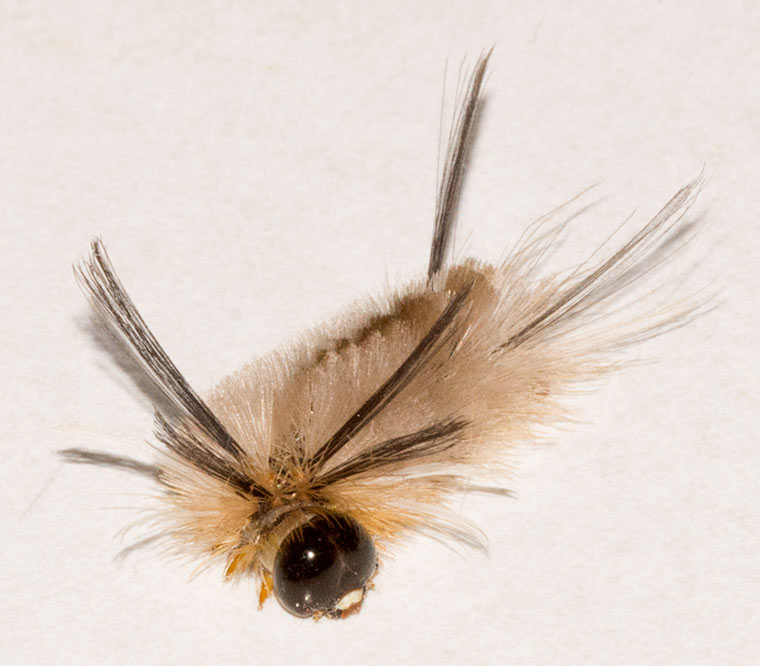 Fall is a great time to find caterpillars. Look at this little beauty that Joyce found crawling on the window trim outside our living room. It is the larval form of the Banded Tussock Moth (Halysidota tessellaris). As it matures, it eats the leaves of a wide variety of common trees. The adults do not feed; their sole purpose is to mate and produce eggs.
Fall is a great time to find caterpillars. Look at this little beauty that Joyce found crawling on the window trim outside our living room. It is the larval form of the Banded Tussock Moth (Halysidota tessellaris). As it matures, it eats the leaves of a wide variety of common trees. The adults do not feed; their sole purpose is to mate and produce eggs.
Although this caterpillar is only about one inch long, it is very conspicuous, with dense hairs all over its body and long “pencils” of black or white hairs on its front and rear parts. As I have mentioned in other posts, any insect this conspicuous is probably not tasty to a predator. Tests with birds and monkeys have confirmed its unpalatability. The hairs can also cause a poison ivy type rash in some humans, so handle it with care. The many hairs on this caterpillar are not wasted; when it matures and pupates it uses the hairs to form its cocoon.
The word tussock is usually used to describe a clump of plants. Since the hairs on this caterpillar and its relatives tend to grow in clumps, the word tussock is used to describe them. The clumps of hairs can just be made out on the rear half of this caterpillar’s back.

What a fascinating post! I’ve never seen one of these caterpillars before. Nature’s diversity always amazes me. I love the fact that they use their hairs to construct their cocoons–natural recyclers!